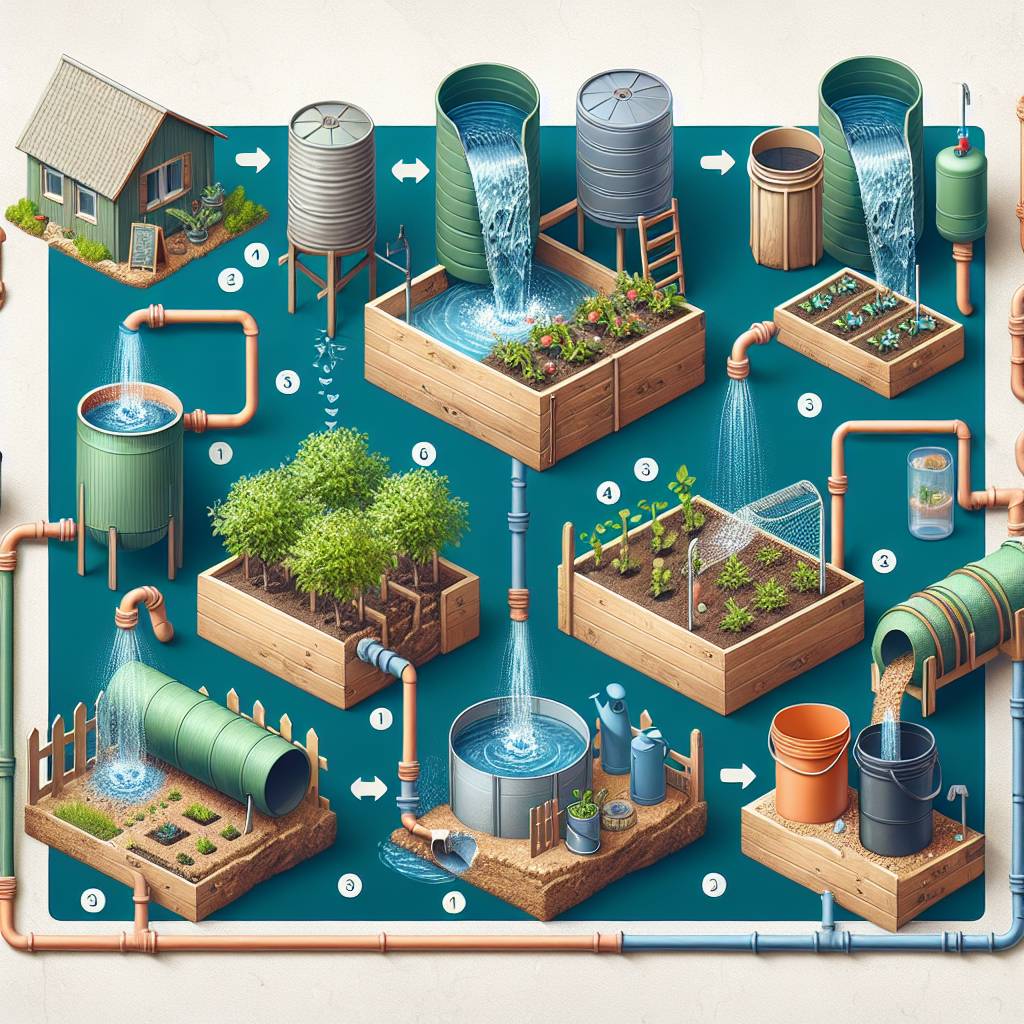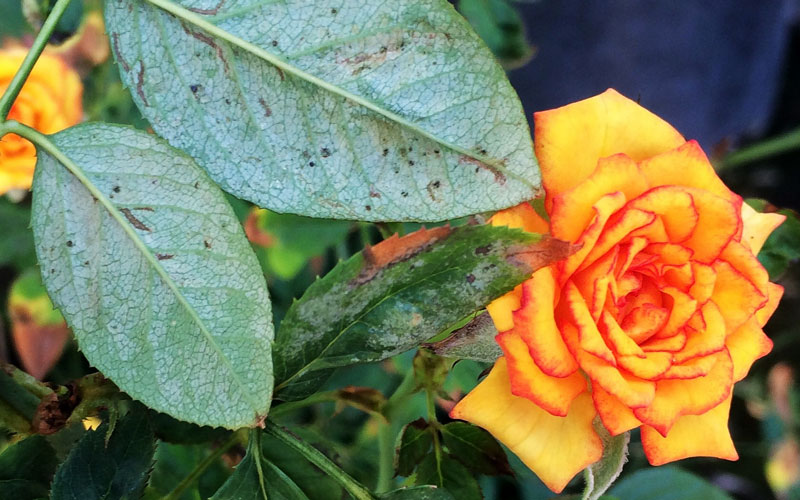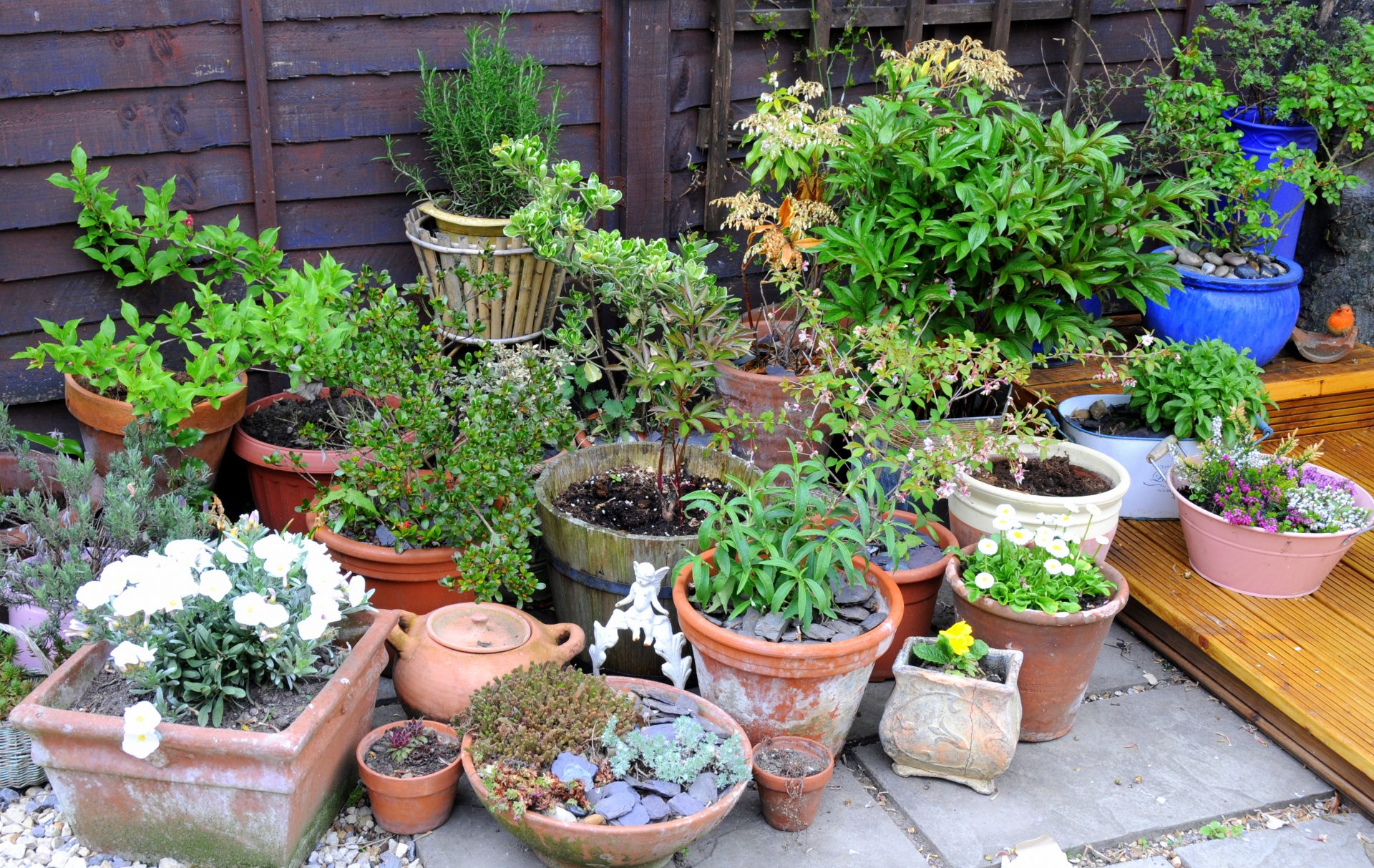Rainwater harvesting methods for gardeners have been employed since ancient times, dating back to civilizations such as the Indus Valley and ancient Rome. This sustainable practice offers a vital solution for gardeners seeking to conserve water and reduce their environmental impact. From simple rain barrels to more advanced systems like permeable pavers and rain gardens, there are numerous options available that cater to different garden sizes and climates. By implementing these methods, gardeners can not only minimize their reliance on municipal water sources but also nurture healthier plants while contributing positively to the ecosystem.
Key Takeaways
- Implement rainwater harvesting to conserve water and reduce reliance on municipal sources.
- Design a harvesting system based on the specific needs and layout of your garden.
- Use efficient collection methods such as gutters, downspouts, and rain barrels to capture rainwater effectively.
- Choose appropriate storage solutions like barrels or tanks to store harvested rainwater.
- Ensure water quality through filtration systems and regular maintenance of harvesting equipment.
- Maximize water conservation by implementing efficient delivery systems like drip irrigation or soaker hoses.
Understanding Rainwater Harvesting
Enhancing Plant Health with Harvested Rainwater
Rainwater harvesting can significantly benefit gardeners by providing plants with natural, untreated water. This collected rainwater is free from the chemicals found in tap water, making it healthier for plants. When harvested rainwater is used to irrigate gardens, it helps maintain soil structure and fertility due to its purity.
Utilizing rainwater harvesting methods ensures that plants in the garden space receive adequate hydration during dry periods without the risk of salt buildup in the soil. Rainwater contains nitrogen, a vital nutrient for plant growth, which further contributes to enhancing overall plant health.
Reducing Water Bills through Rainwater Harvesting
One of the primary advantages of rainwater harvesting for gardeners is the potential cost savings on water bills. By collecting and using rainwater for gardening purposes, individuals can reduce their reliance on municipal or well water sources. This results in lower utility expenses while promoting sustainable rain gardens and eco-friendly practices.
Gardeners who implement effective rainwater harvesting systems can experience substantial reductions in their monthly water bills throughout the year. The financial savings achieved by utilizing harvested rainwater in gallons contribute to long-term affordability and self-sufficiency in maintaining lush gardens.
Minimizing Environmental Impact with Sustainable Gardening Practices
Implementing rainwater harvesting techniques aligns with environmentally conscious gardening practices as it reduces reliance on traditional water sources that may be strained due to excessive demand. By capturing rainfall directly from roofs or other surfaces into storage containers, gardeners actively participate in conserving freshwater resources.
Furthermore, reducing runoff from properties through efficient collection and use of harvested rainwater plays a crucial role in preventing erosion and minimizing pollution of natural bodies of water such as rivers and lakes. Embracing sustainable gardening methods through rainwater harvesting systems not only benefits individual gardeners but also contributes positively to broader environmental conservation efforts.
Designing Harvesting Systems
Wet and Dry Systems
Rainwater harvesting systems can be categorized into wet and dry systems. The wet system involves storing water in a tank, while the dry system uses underground storage through infiltration trenches or porous pavements. When choosing between wet and dry systems, consider factors like available space, soil type, and local regulations. For instance, if your garden has limited space or poor soil drainage, a wet system might be more suitable. On the other hand, a dry system could work well in areas with ample space and good soil permeability.
Maintenance is crucial for both wet and dry rainwater harvesting systems to ensure their efficiency. Regularly clean gutters and filters to prevent clogging in wet systems. In dry systems, inspect infiltration trenches for any blockages caused by debris or sediment buildup.
Indoor Techniques
Implementing indoor rainwater collection methods can significantly contribute to sustainable gardening practices. Utilize containers placed under downspouts to capture rainwater from rooftops for watering indoor plants. Installing efficient indoor filtration systems ensures that the harvested rainwater is free from contaminants before being used on plants.
By using harvested rainwater indoors instead of tap water for plant care, gardeners can reduce their reliance on municipal water sources while also providing plants with natural nutrients present in rainwater.
Graywater Reuse
Graywater reuse offers an additional sustainable approach for gardeners looking to minimize water waste. Benefits of graywater reuse include reducing freshwater usage, diverting household wastewater and rain away from sewage treatment facilities.
When incorporating graywater into gardening practices, it’s essential to follow safe practices such as avoiding contact with edible parts of plants when using untreated graywater. Graywater should primarily be utilized on non-edible ornamental plants rather than vegetables or fruits due to potential health risks associated with untreated household wastewater.
Incorporating graywater and rain into sustainable gardening strategies aligns with eco-friendly principles by maximizing resource efficiency within the garden environment.
Collecting Rainwater Effectively
Gutters and Downspouts
Optimizing gutters and downspouts is crucial. By strategically placing these elements, you can ensure efficient rainwater collection. Positioning the downspouts close to your garden or storage tanks maximizes rainwater flow directly to where it’s needed.
Maintaining clean gutters is also essential in preventing debris from entering the system. Regularly clearing out leaves, twigs, and other obstructions ensures that only clean water enters your rainwater harvesting system. Upgrading your gutters and downspouts with larger diameters can further improve rainwater flow efficiency.
Optimizing Catchment Area
Maximizing the catchment area plays a significant role in increasing rainwater collection for gardeners. Utilizing rooftops, driveways, and other surfaces around your property enables you to capture a substantial amount of rainwater for gardening purposes. This allows you to make the most of available space while reducing water wastage.
Implementing strategic landscaping can also enhance catchment efficiency by directing water towards designated collection points. For example, creating swales or berms on your property redirects runoff towards areas where it can be easily harvested. Incorporating permeable surfaces like gravel paths or pavers helps facilitate better absorption of rainfall into the ground for natural aquifer replenishment.
Storage Solutions for Rainwater
Rain Barrels and Cisterns
Rain barrels and cisterns are essential storage solutions for gardeners to store rainwater. When selecting the right size, consider the average rainfall in your area. For materials, opt for durable options like plastic or wood. Proper installation is crucial; ensure that they are stable and have secure lids to prevent debris from entering.
Integrating rain barrels and cisterns into garden irrigation systems can significantly benefit your plants. By connecting them to a soaker hose or drip irrigation system, you can efficiently water your garden using the collected rainwater. This not only conserves water but also reduces your reliance on traditional water sources.
Storage Tanks Maintenance
Routine maintenance is vital for ensuring the effectiveness of storage tanks in preserving collected rainwater. Regularly inspect them for any signs of damage or leaks, especially after extreme weather conditions such as heavy storms or freezing temperatures. Cleaning out any sediment that accumulates at the bottom of the tank helps maintain its storage capacity.
Preventing algae growth in storage tanks is crucial to maintaining good water quality. To achieve this, keep the tanks covered to minimize exposure to sunlight which promotes algae growth. Utilizing dark-colored tanks or adding an algaecide treatment can also aid in preventing algae formation.
Monitoring water quality in storage tanks is essential for ensuring that it remains suitable for use in gardening activities. Conduct periodic tests to check pH levels and look out for any unusual odors or discoloration indicating contamination issues.
Ensuring Water Quality
First Flush Diverters
First flush diverters are essential for maintaining the quality of harvested rainwater. They prevent the initial runoff from roofs, which may contain contaminants such as bird droppings, dust, and pollutants. By redirecting this initial flow away from the storage tank, gardeners can ensure that only cleaner water enters their collection system.
Installing and maintaining first flush diverters is crucial to their effectiveness. It’s important to position them at a suitable point in the downpipe or gutter to capture the first portion of water after a dry spell or rainfall. Regular maintenance involves cleaning any debris that accumulates in the diverter and ensuring it functions properly by checking for clogs or blockages.
To ensure proper functionality of first flush diverters, gardeners should inspect them before each rainy season and after heavy storms. This will help identify any issues with blockages or malfunctions promptly so they can be addressed before contaminating the water supplies meant for gardening use.
Filter Systems
Choosing appropriate filter systems plays a vital role in maintaining high-quality harvested rainwater. These filters remove impurities like leaves, twigs, and other debris that might have bypassed the first flush diverter. Implementing multi-stage filtration processes involving mesh screens followed by finer filters ensures that even minute particles are removed from collected water.
Cleaning and replacing filter components as needed is crucial for sustaining effective filtration over time. Clogged filters can lead to reduced flow rates and compromised drinking water quality for plants if not maintained regularly.
Implementing multi-stage filtration processes further enhances contamination removal efficiency by addressing various sizes of impurities present in harvested rainwater.
Maximizing Water Conservation
Directing the Flow
Creating efficient drainage pathways is crucial. This involves using gutters and downspouts to direct rainwater into storage containers or directly into the garden soil. By doing so, excess water can be captured and utilized effectively.
Utilizing swales and berms in gardens is another effective method of directing water flow. Swales are shallow ditches that help capture and retain rainwater, while berms are raised mounds of soil that slow down water runoff, allowing it to seep into the ground. These techniques not only prevent erosion but also ensure that rainwater is used efficiently for plant growth.
Self-Watering Systems
Implementing self-watering systems using harvested rainwater helps optimize water use in gardens. These systems can include drip irrigation setups or even specially designed containers with built-in reservoirs that automatically supply water to plants as needed. By utilizing these systems, gardeners can reduce their reliance on traditional watering methods, conserving drinking water while ensuring their plants receive adequate moisture.
Automating watering processes with self-watering systems further enhances water use efficiency by delivering precise amounts of water at optimal intervals. This not only saves time and effort for gardeners but also minimizes the risk of over- or under-watering, promoting healthier plant growth.
Ensuring even distribution of water in self-watering systems is essential for maintaining a balanced moisture level across the entire garden area. This prevents certain areas from receiving too much or too little water, optimizing excess water utilization without leading to wastage.
Implementing Efficient Delivery Systems
Efficient Irrigation Calculation
Gardeners can optimize irrigation by calculating the exact water requirements based on their collected rainwater. By understanding the precise needs of their plants, gardeners can avoid over- or under-watering, ensuring efficient use of resources. For example, if a garden receives 1 inch of rainfall and the soil type retains half an inch per week, then only half an inch needs to be supplied through irrigation.
Adjusting irrigation schedules according to seasonal variations is crucial for maintaining healthy plants while conserving water. During rainy seasons or cooler months, less irrigation may be necessary as natural rainfall provides moisture. Conversely, in hot and dry periods, more frequent watering might be required to compensate for evaporation.
Optimizing irrigation efficiency not only conserves water but also reduces utility costs and promotes healthier plant growth. Drip systems and soaker hoses are examples of efficient methods that deliver water directly to the roots while minimizing wastage due to runoff or evaporation.
Understanding Pressure Tanks
Selecting appropriate pressure tanks is essential for ensuring smooth operation in irrigation systems. Gardeners should consider factors such as tank size, pressure ratings, and materials when choosing a pressure tank that suits their specific needs. For instance, larger gardens with extensive irrigation networks may require bigger tanks with higher pressure ratings.
Maintaining optimal pressure levels in irrigation networks ensures uniform distribution of water across all areas of the garden. Properly pressurized systems prevent uneven watering patterns that can lead to overwatered or underwatered sections within the garden.
Ensuring safety measures when working with pressure tanks is vital for protecting both individuals and equipment from potential hazards. This includes regular inspections for leaks or damage, following manufacturer guidelines for installation and maintenance procedures, and implementing appropriate shut-off valves in case of emergencies.
Step-by-Step Collection Guide
Effective Water Collection Techniques
Gardeners can employ advanced techniques to maximize the efficiency of rainwater harvesting methods. For instance, installing a rain barrel or cistern with a built-in filtration system can help in capturing and storing water more effectively. Incorporating gutter systems into the garden’s design allows for the directed flow of rainwater into storage containers.
Utilizing innovative technologies such as drip irrigation systems and moisture sensors can also aid in efficient water capture. Drip irrigation delivers small amounts of water directly to plant roots, reducing wastage and ensuring that plants receive adequate hydration. Meanwhile, moisture sensors help gauge soil moisture levels, preventing over-watering.
Adapting collection techniques to specific climate conditions is crucial for successful rainwater harvesting. In regions with infrequent rainfall, it may be beneficial to invest in larger storage tanks or underground cisterns to store water during dry spells. Conversely, areas prone to heavy rainfall might require overflow mechanisms to prevent flooding and ensure maximum utilization of collected rainwater.
Creating Sustainable Gardens
Incorporating permaculture principles into garden design is an excellent way for gardeners to create sustainable landscapes while utilizing rainwater harvesting methods. By employing permaculture techniques such as swales (shallow ditches) and berms (raised mounds), gardeners can capture and retain rainwater within their gardens naturally.
Promoting biodiversity through sustainable gardening practices complements rainwater harvesting, creating resilient ecosystems that thrive on natural resources rather than external inputs like municipal water supplies or chemical fertilizers. Planting native species adapted to local climate conditions not only reduces the need for additional watering but also supports local wildlife populations.
Reducing reliance on external water sources through sustainable methods involves integrating eco-friendly practices like mulching and xeriscaping (landscaping designed for arid environments). Mulching helps conserve soil moisture by reducing evaporation rates, while xeriscaping focuses on using drought-tolerant plants that require minimal watering—ideal for regions facing water scarcity challenges.
Maintenance and Preparations for Seasons
Clean and Bug-Free Systems
Promoting cleanliness is crucial to prevent contamination of harvested rainwater. Regularly clean the gutters, downspouts, and storage tanks to remove debris, dirt, and leaves that can taint the water. Implementing pest control measures such as installing mesh screens on tank openings prevents insects from entering the system. Maintaining hygiene standards in stored rainwater by using a biodegradable algaecide helps prevent algae growth.
It’s important to keep in mind that promoting cleanliness not only ensures the quality of collected rainwater but also extends the lifespan of your harvesting system. For example, regularly removing debris from collection surfaces reduces clogging and potential damage caused by standing water.
Preparing for Winter Storage
As winter approaches, it’s essential to winterize storage tanks and containers to prevent freezing. One method is insulating outdoor pipes with foam pipe insulation or heating cables to protect them from freezing temperatures. Protecting outdoor components of rainwater harvesting systems from winter damage includes covering above-ground pipes with insulated sleeves or burying them below frost line.
Adjusting maintenance routines for winter storage considerations involves draining all exposed piping before temperatures drop below freezing point. This process prevents ice formation within the pipes which can lead to bursting due to expansion.
Closing Thoughts
You’ve now mastered the art of rainwater harvesting! By understanding the principles, designing efficient systems, and ensuring water quality, you’re well-equipped to conserve water and nurture your garden. Remember, every drop counts, and your efforts in collecting and storing rainwater can make a significant impact on the environment. As you embark on this sustainable journey, continue to maintain your system, adapt it for different seasons, and maximize water conservation to reap the full benefits.
Now it’s time to put your knowledge into action. Start implementing the steps outlined in this guide and watch as your garden flourishes with the help of harvested rainwater. Share your experience with others and encourage them to join the movement towards sustainable water usage. Together, we can make a difference one raindrop at a time!
Frequently Asked Questions
How can I start rainwater harvesting for my garden?
You can start by understanding the basics of rainwater harvesting, designing a system suitable for your garden, and implementing efficient delivery systems. It’s like setting up a network to collect and distribute resources where they are needed.
What are the best methods for collecting rainwater effectively?
The most effective methods include using gutters, downspouts, and storage tanks to capture and store rainwater. Think of it as creating a reservoir that replenishes itself with every rainfall.
How can I ensure the quality of harvested rainwater for my garden?
To ensure water quality, consider installing filters or screens in your collection system and regularly maintaining them. This helps remove debris and contaminants from the collected water before it reaches your plants.
What are some maintenance tips for rainwater harvesting systems?
Regularly inspecting your system for leaks or blockages is essential. Also, clean out debris from gutters and filters to maintain optimal functionality. It’s like tending to a well-oiled machine – regular checks keep everything running smoothly.
Can I use harvested rainwater all year round?
Yes, you can use harvested rainwater throughout the year with proper storage solutions and seasonal preparations. By adjusting your system based on weather patterns, you can make sure you have enough water even during drier periods.






